The following five pictures show the allied bombing of Bielefeld
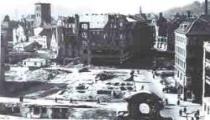
.jpg)
This picture (above) was taken from Detmolderstrasse at the junction where the tram usually bends right towards the city centre. The church with the two spires still exist to this day (as can be seen below).
.jpg)
.jpg)
Again, more images showing the bombing of the city (above and below).
.jpg)
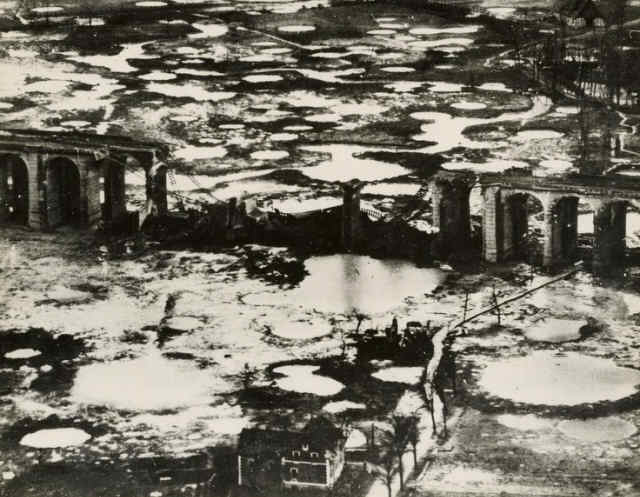
The railway viaduct at Bielefeld photographed on 17 March 1945, after the attack by RAF Bomber Command on 14 March, with 22,000 lb and 12,000 lb bombs and attacks by US Heavy Bombers earlier that month. The huge size of the craters can be seen when compared to the house close by (I can only imagine the owner having studied sign language after the war).
Crown Copyright
Examination of the photographs taken after the daylight attack on the railway viaduct in Bielefeld, against which the RAF’s new ten ton bomb was used for the first time, show the damage was even more complete than at first realised. As a result of the attack on 14 March 1945, the Lancasters of RAF Bomber Command, the two parallel viaducts had been wrecked over a length of over a hundred yards, nearly one third of the length of the whole structure. Three spans of one of the viaducts had already been destroyed in an earlier attack.
The great piers supporting 7 of the of the spans of the Southern Viaduct had completely disappeared. Only the stumps remain of the piers which carried seven spans of the other.
.jpg)
The Bielefeld Viaduct was given number one status on RAF Bomber Command’s list of transport targets.
The viaduct had been peppered with 3500 tons of smaller bombs before a single 10 ton “Grand Slam” did the business. The time being 1648 hrs, 14 March 1945, the heroes being 617 Squadron.
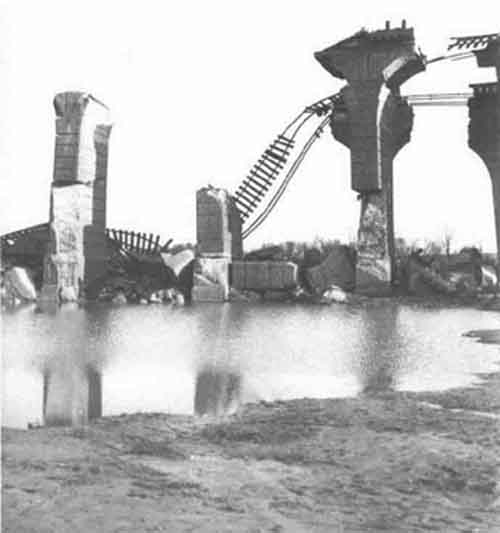
The bridge still stands today and I regret not taking a photograph during my time in Bielefeld. Even the crater has been made good use of by filling it with water and creating quite a picturesque lake.
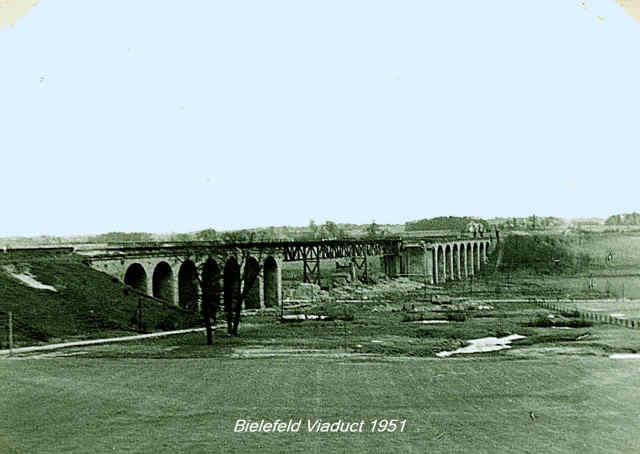
Courtesy of Mr Nick Carter
The Germans know the bridge as Sieker Tal Brücke. The authorities ended up flooding the valley to make a “pleasure reservoir” due to the amount of unexploded ordnance that littered the valley. It was easier to cover it in water than to de-bomb the land.
.jpg)
Courtesy of Mr Nick Carter
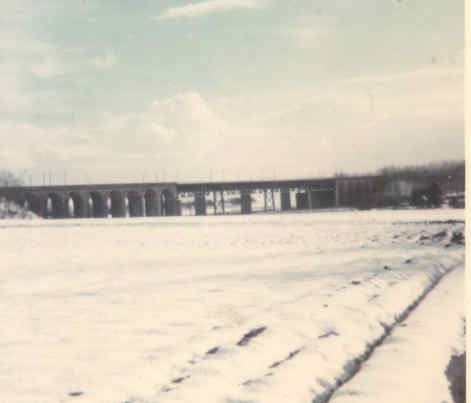
A snow covered Bielefeld. The reconstructed bridge can be seen along with the original arches. Early 1970s.
Courtesy of Mr Alan Spoors
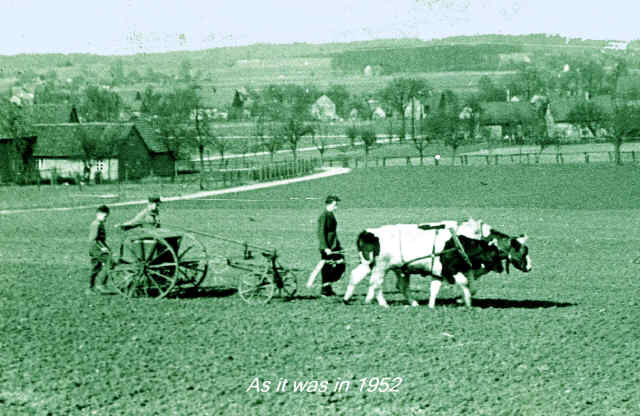
This picture was taken close by to the viaduct. The photo could be from 1752. Amazing.
Courtesy of Mr Nick Carter
The following three photos show a Nazi parade within the city centre.
.jpg)
.jpg)
Judging by the gun in the background, these gentlemen were probably based at the artillery camp at Catterick Barracks. Rathaus can be seen in the background.
.jpg)
The following two photos shows the deportation of Jews
.jpg)
.gif)
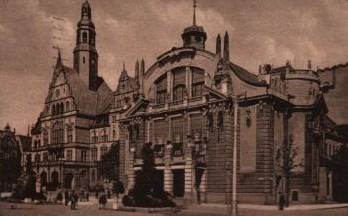
Rathaus and Theatre 1950
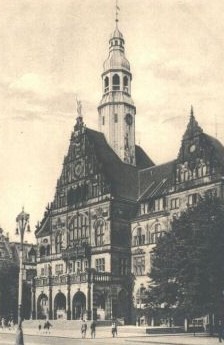
Bielefeld, Rathouse, 1950
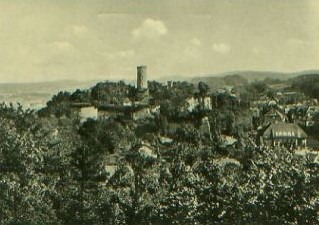
Sparrenburg
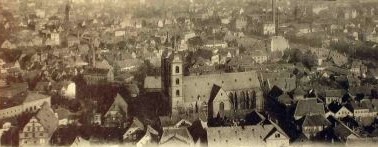
Sparrenberg dated as 1905

Bielefeld Sparrenburg 1955
Courtesy of Sgt Ed Cooper, REME
.jpg)
